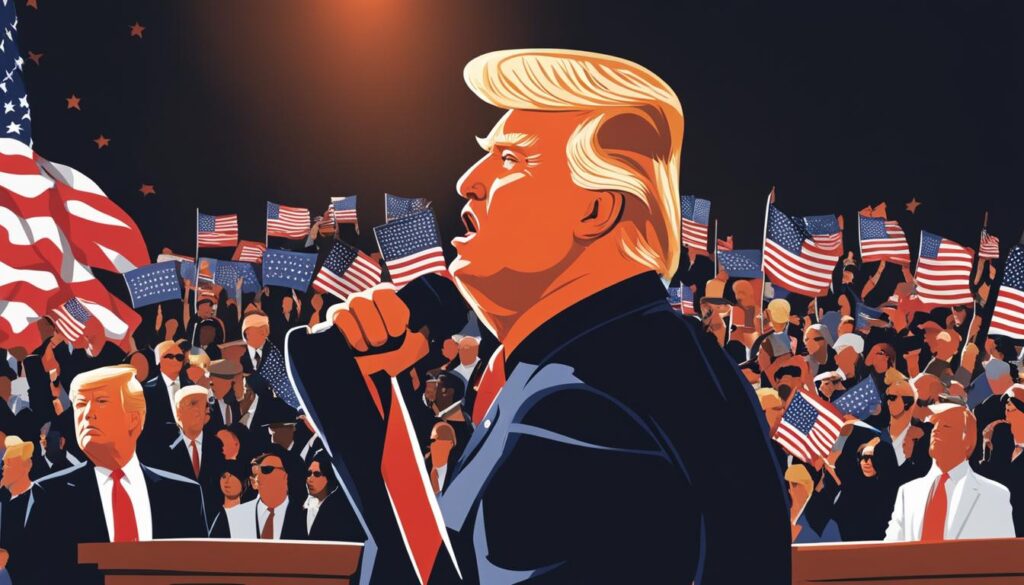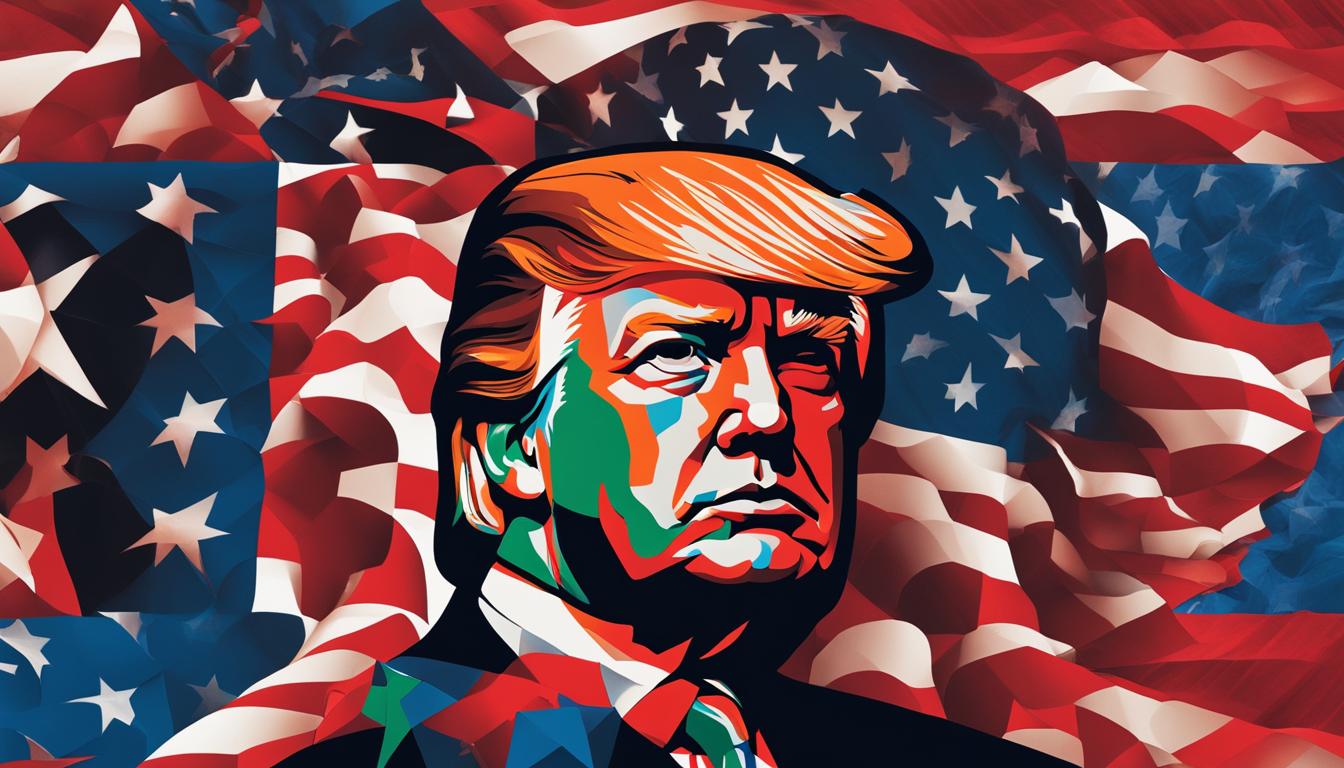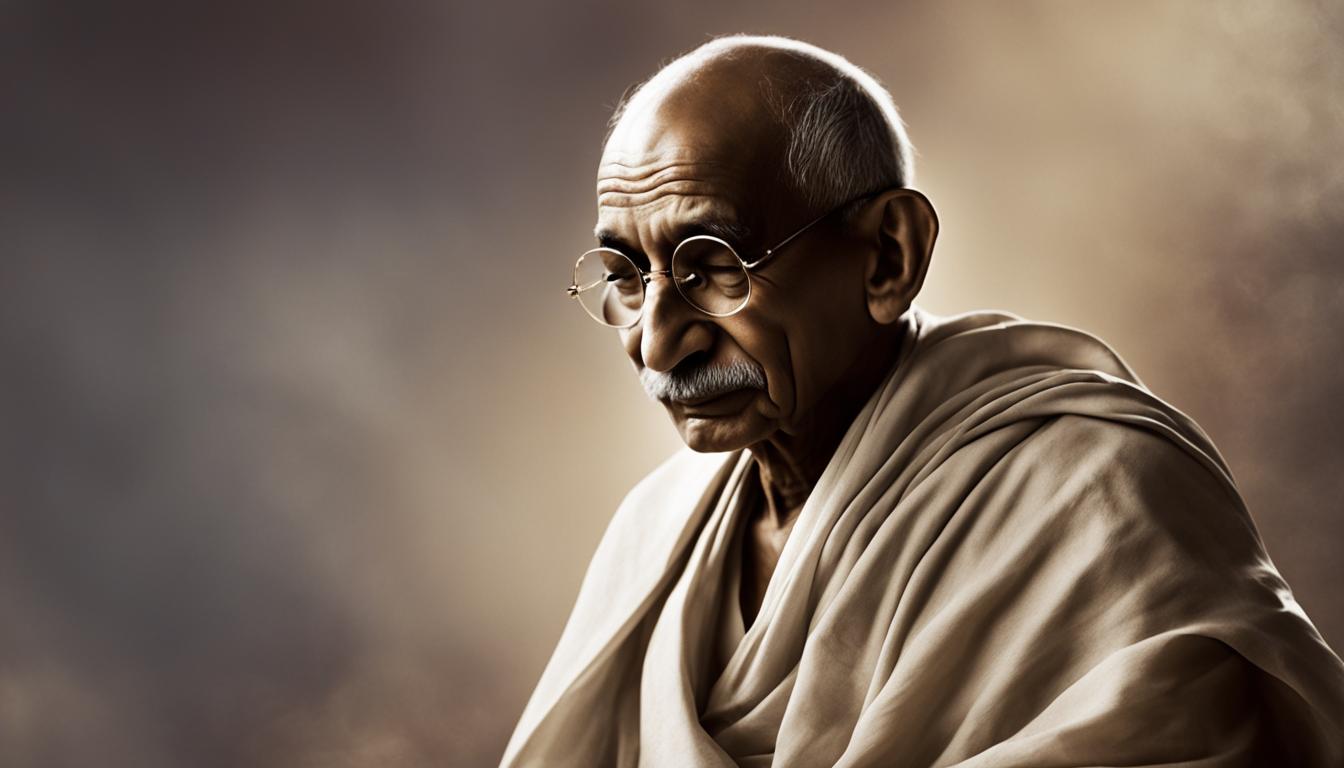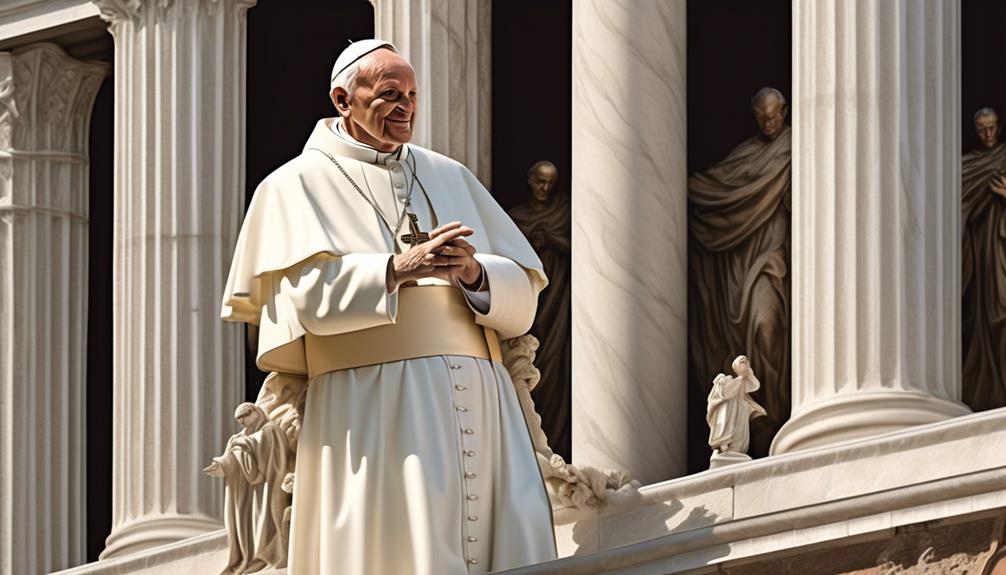Donald Trump is a polarizing figure whose presence usually speaks for itself. Love him or hate him, it’s clear that his words have had a major impact on our society and culture. From his successful business ventures to his controversial time in politics, Trump is known for unapologetically expressing his opinions. This article takes a closer look at some of his memorable quotes that provide insight into his perspective on life, achievements, and more.
Key Takeaways:
- Donald Trump’s quotes provide valuable insights into his mindset and approach to life and success.
- His words reflect his belief in thinking big, embracing challenges, and taking responsibility for one’s actions.
- Trump’s quotes highlight the importance of passion, resilience, and the pursuit of excellence.
- Criticism and failure are seen as opportunities for growth and learning in Trump’s philosophy.
- While controversial, Trump’s words have influenced public discourse and shaped the political landscape.
Reacting to New Twists of Fate
Donald Trump believes that how a person reacts to each new twist of fate separates winners from losers. He emphasizes the importance of adaptability, pivoting, and finding alternate routes when faced with obstacles. Winners see challenges as opportunities and setbacks as learning experiences, while losers give up easily and blame others for their failures.
“You have to think anyway, so why not think big?”
“As long as you’re going to be thinking anyway, think big.”
“We need a leader that wrote ‘The Art of the Deal.'”
Donald Trump’s philosophy on reacting to new twists of fate is encapsulated in his famous quotes. His emphasis on adaptability and finding alternate routes is echoed through his quotes on thinking big and recognizing the need for a leader who understands deal-making.
It’s evident that Trump believes in seizing opportunities and approaching challenges with a growth mindset. This mindset has been pivotal in his business ventures, as well as his political career.
One of the key takeaways from Trump’s view on reacting to new twists of fate is the importance of resilience and accountability. Winners take responsibility for their actions and do not let obstacles define them. Rather, they use setbacks as opportunities to learn and evolve.

Thinking Big
When it comes to achieving success, Donald Trump believes in thinking big. He encourages individuals to set ambitious goals and not limit themselves in any way. By thinking big, we can expand our possibilities and reach greater heights in both life and business.
“The point is that you can’t be too greedy.”
“Don’t get sidetracked, and don’t let people discourage you.”
“I like thinking big. If you’re going to be thinking anything, you might as well think big.”
Donald Trump’s quotations on thinking big underline the importance of having a grand vision and aiming for greatness. By adopting this mindset, we open ourselves up to new opportunities and possibilities that we might not have considered otherwise.
Expanding Horizons
When we think big, we challenge ourselves to reach beyond our comfort zones and explore uncharted territories. It pushes us to overcome our limitations and tap into our full potential. By setting lofty goals, we create a drive within ourselves to strive for excellence and continuously improve.
Igniting Innovation
Thinking big also fuels innovation. It encourages us to think outside the box, come up with groundbreaking ideas, and pioneer new solutions. By embracing an expansive mindset, we become more open to taking risks, experimenting, and adapting to change.
Overcoming Obstacles
Thinking big prepares us to tackle the challenges that arise along the way. By setting audacious goals, we are more likely to encounter obstacles and setbacks. However, a mindset focused on thinking big helps us develop resilience, perseverance, and determination necessary to overcome these hurdles and keep moving forward.
By adopting Donald Trump’s philosophy of thinking big, we can unlock our full potential, explore new horizons, and achieve remarkable success in our personal and professional lives. So, let’s dare to dream big and seize the opportunities that lie ahead!

Fighting Back
When someone wrongs you repeatedly, Donald Trump suggests that the best course of action is to fight back. He advocates for standing up for oneself, being tough, and not allowing others to take advantage. This quote reflects his belief in resilience and determination.
“When somebody hurts you, just go after them as viciously and as violently as you can.”
This quote by Donald Trump exemplifies his unwavering commitment to not letting others trample over him. He encourages individuals to fight back, not just figuratively, but fiercely and relentlessly. It is a testament to his belief that resilience and determination are key qualities for achieving success.

Stand Your Ground
In his quote, Donald Trump emphasizes the importance of standing your ground when faced with adversity. Whether it be in personal or professional situations, his message is clear – don’t let others push you around. By fighting back, one can assert their worth and protect their interests.
Determination and Motivation
Donald Trump’s quote also highlights the significance of resilience and determination in achieving success. Instead of succumbing to defeat, he urges individuals to channel their frustration into motivation and use it as fuel to overcome challenges. It is this unwavering resolve that sets apart those who achieve greatness from those who give up.
Quotes for Inspiration
Here are a few more quotes from Donald Trump that embody his relentless spirit:
- “I’ve always won, and I’m going to continue to win. And that’s the way it is.”
- “No dream is too big. No challenge is too great. Nothing we want for our future is beyond our reach.”
- “I always find a way to win.”
Key Qualities for Success
| Qualities | Description |
|---|---|
| Resilience | The ability to bounce back from setbacks and keep moving forward. |
| Determination | The unwavering commitment to achieving goals, regardless of obstacles. |
| Assertiveness | The ability to stand up for oneself and not let others take advantage. |
| Motivation | The internal drive and enthusiasm to work towards success. |
Unrealistic Goals and Timeframes
Donald Trump challenges the notion of unrealistic goals by stating that there are no such things, only unrealistic timeframes. He believes that any goal can be achieved as long as individuals give themselves enough time to work towards it. This quote emphasizes the importance of persistence and patience in achieving success.
“Some people dream of success, while others wake up and work hard at it.”
Donald Trump’s statement reflects his belief in the power of hard work and dedication. It implies that success is not achieved overnight but through consistent effort and a determination to overcome obstacles. By focusing on realistic timeframes, individuals can set achievable goals and increase their chances of attaining success.
Fulfilling Goals through Effective Time Management
To turn goals into reality, it’s crucial to manage time effectively. Here are some time management techniques that can help:
- Prioritize tasks: Identify the most important tasks that align with your goals and tackle them first.
- Create a schedule: Allocate specific time slots for each task to stay organized and maximize productivity.
- Set deadlines: Establish realistic deadlines for each task to maintain focus and avoid procrastination.
- Eliminate distractions: Minimize distractions such as social media or unnecessary meetings to stay focused on your goals.
- Delegate effectively: Delegate tasks that can be done by others to free up time for critical activities that require your attention.
By implementing these time management strategies, individuals can optimize their productivity, stay on track with their goals, and increase their chances of success.
| Time Management Quotes | Author |
|---|---|
| “Lost time is never found again.” | Benjamin Franklin |
| “Time is what we want most, but what we use worst.” | William Penn |
| “Don’t watch the clock; do what it does. Keep going.” | Sam Levenson |

Responsibility for Success and Failure
Donald Trump is known for his strong leadership qualities and his belief in taking responsibility for both success and failure. He recognizes that true leaders must be accountable for the outcomes they achieve and the performance of their team. Trump’s leadership quotes highlight the importance of taking ownership in order to drive success and foster a culture of accountability.
“I alone can fix it. I will restore law and order.”
This quote exemplifies Trump’s belief in personal responsibility and his determination to take charge. By assuming responsibility, leaders can inspire their team to strive for excellence and achieve collective goals. Trump’s approach to leadership involves making tough decisions, taking calculated risks, and guiding others towards success.
Quotes on Leadership and Accountability:
- “The buck stops with the guy who signed the checks.”
- “You have to think anyway, so why not think big?”
- “Leadership is solving problems. The day soldiers stop bringing you their problems is the day you have stopped leading them. They have either lost confidence that you can help or concluded you do not care. Either case is a failure of leadership.”
Trump’s leadership philosophy emphasizes the importance of taking ownership and leading by example. By assuming responsibility, leaders can inspire their team, drive accountability, and achieve extraordinary results.
| Leadership Quotes | Responsibility Quotes | Accountability Quotes |
|---|---|---|
| “Leadership is not about being in charge. It is about taking care of those in your charge.” | “Success is not final, failure is not fatal: It is the courage to continue that counts.” | “Accountability breeds response-ability.” |
| “The function of leadership is to produce more leaders, not more followers.” | “Success is not the key to happiness. Happiness is the key to success. If you love what you are doing, you will be successful.” | “If you could kick the person in the pants responsible for most of your trouble, you wouldn’t sit for a month.” |

Money and Motivation
In his endeavors, Donald Trump’s motivation was never purely driven by money. Instead, he viewed it as a means to keep score in the game of business.
“Money was never a big motivation for me, except as a way to keep score. The real excitement is playing the game.” – Donald Trump
This quote highlights Trump’s passion for entrepreneurship and his focus on the journey rather than the end goal. For him, the thrill lies in the strategic maneuvers, calculated risks, and navigating the ever-changing business landscape.
https://www.youtube.com/watch?v=_4nKc7xXxns
The Game of Business
For Donald Trump, running a successful business was akin to playing a game. It involved crafting innovative strategies, outsmarting competitors, and making bold moves. He thrived on the challenges that business presented, embracing both triumphs and setbacks along the way.
In this game, money was not the sole driving force. While financial success was undoubtedly important, Trump understood that true fulfillment came from the pursuit of his entrepreneurial endeavors. It was the thrill of the game, the satisfaction of overcoming obstacles, and the ability to leave a lasting impact that motivated him.
Focused on the Journey
Trump’s perspective reveals a profound understanding of the true nature of success. It’s not confined solely to monetary achievements but extends to personal growth, strategic decision-making, and the pursuit of one’s passions. By focusing on the journey rather than fixating on the end goal, one can truly savor each step, learn valuable lessons, and experience the full range of emotions that accompany the pursuit of success.
| Key Points | Motivation | Game of Business | Focusing on the Journey |
|---|---|---|---|
| Donald Trump’s Perspective | Money as a way to keep score | Business as an exhilarating game | Emphasizing personal growth and experiences |
| Insights | Money alone does not guarantee fulfillment | Thriving on challenges and strategic maneuvers | Enjoying the process and learning from each step |
Donald Trump’s viewpoint on money and motivation offers a fresh perspective on success and demonstrates that an entrepreneur’s drive goes beyond the pursuit of wealth. By approaching business as a game and prioritizing the journey over the destination, one can find true fulfillment in the pursuit of their passions and the challenges that lie ahead.
Embracing Criticism
In a world where criticism can be difficult to accept, Donald Trump recognizes its importance in fostering growth and development. He firmly believes that those who shy away from criticism are not pushing themselves to achieve remarkable things. Instead, he encourages individuals to embrace feedback as a catalyst for improvement and a means to challenge existing beliefs.
“When you’re the star, as I’m talking to many of you in this room today, sometimes you have to be a part-time psychiatrist. One minute you’re making somebody feel good; the next minute you’re criticizing somebody, but they’re in the papers and they’re loving every minute of it. I love doing that stuff, by the way. It’s tremendous.”
~ Donald Trump
By acknowledging the value of criticism, Trump exemplifies the growth mindset, a philosophy that embraces challenges and sees failures as opportunities for learning and improvement. He encourages individuals to venture outside their comfort zones, take risks, and welcome diverse perspectives. In doing so, one can continuously evolve and surpass their own limitations.
To illustrate this point, let’s take a closer look at three essential elements of Trump’s perspective on embracing criticism:
1. Feedback as Fuel for Growth
Trump understands that criticism holds tremendous potential for growth. Just as a fitness enthusiast relies on the pain of workouts to build strength, he believes that constructive feedback can propel individuals towards personal and professional advancement. Rather than fearing criticism, Trump encourages us to see it as an opportunity to gain valuable insights and adapt accordingly.
2. Challenging Conventional Thinking
By embracing criticism, Trump challenges established norms and conventional wisdom. He advocates for bold perspectives and unapologetic self-expression, believing that true progress often stems from questioning the status quo. For Trump, embracing criticism is an act of intellectual courage and a willingness to challenge prevailing beliefs.
3. Harnessing the Power of Resilience
Criticism can be disheartening, but Trump encourages resilience in the face of adversity. He believes that by developing a thick skin, individuals can endure criticism, learn from it, and emerge stronger. By embracing criticism and choosing to rise above it, one can cultivate the resilience necessary to overcome obstacles and achieve success in the long run.
This perspective on embracing criticism aligns with Trump’s overall belief in continuous improvement and pushing boundaries. By embracing feedback as an opportunity for growth, individuals can adopt a growth mindset and unlock their full potential.
| Benefits of Embracing Criticism | Example Quotes |
|---|---|
| Opportunity for growth and improvement | “I like criticism. It makes you strong.” |
| Challenge traditional perspectives | “I don’t hire a lot of number-crunchers and I don’t trust fancy marketing surveys. I do my own surveys and draw my own conclusions.” |
| Build resilience and mental toughness | “When somebody challenges you, fight back. Be brutal. Be tough.” |
The Power of Passion and Energy
Passion and energy are two essential ingredients for achieving success, according to Donald Trump. As he famously stated, “Without passion, you have no energy, and without energy, you have nothing.” These words highlight the profound impact that passion can have on driving individuals to reach their goals.
Passion fuels the fire within us, motivating us to push beyond our limits and persevere through challenges. It ignites a sense of purpose and determination that propels us forward, even when faced with obstacles. With passion, we find the energy and resilience needed to overcome setbacks and stay focused on our aspirations.
Without passion, you have no energy, and without energy, you have nothing.
When we are passionate about something, whether it be a career, a project, or a cause, our commitment and dedication shine through. Passion enables us to pour our heart and soul into our pursuits, leading to extraordinary outcomes. It drives us to go the extra mile, pushing boundaries and exceeding expectations.
Donald Trump’s belief in the power of passion is a reminder to embrace our passions and infuse our endeavors with enthusiasm. Whether it’s in the realm of business, personal growth, or any other aspect of life, cultivating and harnessing our passion can make all the difference.
So, let’s dare to dream big, pursue what sets our hearts ablaze, and channel our energy into realizing our aspirations. With passion as our compass, we can navigate the challenges that come our way and create a future filled with success.
Passion Quotes:
- “Passion is energy. Feel the power that comes from focusing on what excites you.” – Oprah Winfrey
- “Do what you love, and you will never work a day in your life.” – Confucius
- “If you can’t figure out your purpose, figure out your passion. For your passion will lead you right into your purpose.” – Bishop T.D. Jakes
Energy Quotes:
- “Energy and persistence conquer all things.” – Benjamin Franklin
- “Your energy introduces you before you even speak.” – Oprah Winfrey
- “Positive energy evokes more energy, more initiative, and more happiness.” – Unknown
Failure and Learning
Donald Trump believes that failure is not a roadblock to success, but rather a stepping stone towards it. In his own words, “Success comes from failure, not from memorizing the right answers.” This perspective highlights his belief in the transformative power of failure and the valuable lessons that can be learned from it.
Failure provides invaluable learning experiences and teaches individuals how to navigate obstacles. It is through failure that we gain the wisdom and resilience needed to overcome challenges and ultimately achieve success.
Instead of fearing failure, Donald Trump encourages us to embrace it as an opportunity for growth and self-improvement. By viewing failure as a valuable teacher, we can develop a mindset that allows us to learn from our mistakes and adapt our strategies accordingly.
Learning from failure requires humility and a willingness to acknowledge and address our shortcomings. As Donald Trump puts it, “The biggest challenge after success is shutting up about it and starting over again.” This quote reminds us that true growth and success come from constantly pushing ourselves outside of our comfort zones and being open to new possibilities.
By reframing failure as a catalyst for growth and learning, we can develop the resilience, adaptability, and determination necessary to achieve our goals. As we navigate the challenges on our journey, we can draw inspiration from Donald Trump’s belief in the transformative power of failure.
The Importance of Action
Donald Trump once said, “Spending too much time planning and anticipating problems is a form of procrastination.” In a world where overplanning and analysis paralysis are common pitfalls, this quotation serves as a reminder of the significance of taking action.
“…prioritize action and solve problems as they arise instead of getting caught up in overplanning.”
According to Trump, success is not solely determined by meticulous planning, but rather by the ability to adapt and navigate challenges in real-time. By addressing problems as they arise, individuals can harness their creativity and resourcefulness to find efficient solutions.
In today’s fast-paced world, productivity is closely intertwined with action. It is not enough to have a well-crafted plan; execution is key. While planning is essential, spending excessive time on it can lead to missed opportunities and delayed progress.
Through his quote, Trump emphasizes the importance of agility and the willingness to confront obstacles head-on. Instead of succumbing to the temptation of endless preparation, individuals should focus on taking meaningful steps forward.
By embracing action, we can gain valuable experience, learn from our mistakes, and achieve tangible results. As Trump aptly put it, “taking action and learning through experience” is the path to success.
The Value of Non-Investment
When it comes to investment decisions, Donald Trump reminds us that sometimes the best investments are the ones we don’t make. His emphasis on discernment and caution reflects his belief in the value of saying no to certain opportunities. This approach allows us to maintain focus on what truly matters and avoid potentially risky ventures.
“Sometimes your best investments are the ones you don’t make.”
In the world of business, decision-making is key. By carefully considering the potential risks and rewards, we can make better choices that align with our long-term goals. Donald Trump’s wisdom serves as a valuable reminder to approach investment decisions with a sense of discernment and strategic thinking.
While it’s essential to seize opportunities that align with our vision, having the ability to recognize when a venture may not yield the desired outcome is equally important. This skill allows us to protect our resources and direct our focus towards opportunities that have a higher probability of success.
In the fast-paced world of business, it can be tempting to jump into every opportunity that comes our way. However, by exercising caution and carefully evaluating the potential return on investment, we can make more informed decisions that lead to sustainable growth and long-term success.
Donald Trump’s belief in the value of non-investment reminds us that sometimes saying no can be just as powerful as saying yes. By staying focused and discerning, we can prioritize the opportunities that truly align with our business objectives and enhance our chances of achieving long-term success.
Building a Brand
When it comes to building a successful business, Donald Trump emphasizes the importance of branding. According to him, a brand should not only communicate what a business cares about but also show that it genuinely cares about its customers. Trump believes that building a brand is just as important, if not more important, than building the business itself.
“A brand is important. It’s everything. Branding is what people say about you when you’re not in the room.”
– Donald Trump
These words highlight Trump’s belief in the power of branding to create a lasting impression and forge a strong connection with customers. In today’s competitive marketplace, establishing a compelling brand identity can set a business apart from the rest and contribute significantly to its success.
Key Elements of a Powerful Brand
Trump’s view on branding offers valuable insights for businesses aiming to make their mark. Here are a few key elements that contribute to the building of a powerful brand:
- Consistent Visual Identity: Ensuring that your brand’s logo, color scheme, typography, and overall visual presentation are consistent across all platforms and marketing materials.
- Clear Brand Message: Defining a concise and compelling brand message that communicates your values, mission, and unique selling points.
- Authenticity: Cultivating an authentic brand that reflects the genuine values and personality of your business.
- Customer-centric Approach: Demonstrating a genuine care for your customers by providing exceptional products, services, and support.
- Effective Marketing: Employing targeted marketing strategies to reach and engage with your target audience effectively.
By incorporating these elements into your branding strategy, you can create a strong brand presence that resonates with customers and drives business growth.
| Benefits of Building a Strong Brand | Examples |
|---|---|
| Increased brand recognition and recall | |
| Improved customer loyalty and trust | |
| Differentiation from competitors | |
| Ability to command premium pricing | |
| Opportunities for brand extension and diversification |
A strong brand has various benefits, including increased brand recognition and recall, improved customer loyalty and trust, differentiation from competitors, and the ability to command premium pricing. Furthermore, a robust brand opens up opportunities for brand extension and diversification, allowing businesses to expand their offerings and reach new markets.
As Donald Trump suggests, building a brand is an essential investment that can significantly contribute to the success and longevity of a business. By prioritizing branding, businesses can cultivate a strong identity, forge meaningful connections with their audience, and position themselves as leaders in their respective industries.
The Role of Luck
Donald Trump believes that luck plays a significant role in life. He suggests that luck is not just a coincidence but a result of one’s actions and decisions. This reflects his belief in the importance of creating opportunities and being proactive in pursuit of success.
“I believe in luck and fate, but I also believe that we have a say in our destiny. We can’t just wait for luck to come knocking at our door; we have to go out there, take risks, and make things happen.”
According to Trump, luck is not something that randomly happens to us. It is influenced by our mindset, choices, and actions. By being proactive, seeking opportunities, and taking calculated risks, individuals can increase their chances of success.
Donald Trump’s view on luck aligns with his overall philosophy of being a go-getter and taking control of one’s own destiny. Instead of passively waiting for luck to strike, he encourages individuals to create their own luck through hard work, determination, and seizing opportunities.
While luck may play a role in opening doors, it is ultimately up to the individual to walk through them and make the most of the opportunities presented. Trump’s belief in the importance of action and seizing these opportunities is reflected in his own entrepreneurial success.
Throughout his career, Trump has pursued various ventures and leveraged opportunities to build a successful business empire. His belief in the role of luck serves as a reminder for individuals to stay proactive, take risks, and capitalize on the chances that come their way.
It is important to note that while luck may create opportunities, success also requires hard work, dedication, and the ability to adapt to changing circumstances. Luck alone is not enough to guarantee success, but it can certainly tip the scales in one’s favor.
| Topic | Quote |
|---|---|
| Luck | “I believe in luck and fate, but I also believe that we have a say in our destiny. We can’t just wait for luck to come knocking at our door; we have to go out there, take risks, and make things happen.” |
| Business | “Without passion, you don’t have energy. Without energy, you have nothing.” |
| Success | “I like thinking big. If you’re going to be thinking anything, you might as well think big.” |
Conclusion
Throughout his career and presidency, Donald Trump has shared a multitude of quotations that provide valuable insights into his mindset and approach to business and politics. These quotes reflect his unwavering resilience, persistent determination, and relentless pursuit of success. Whether one agrees with his views or not, it is undeniable that his quotations have left a lasting impact on shaping public discourse and influencing the political landscape.
Donald Trump’s wit and sharp remarks have garnered attention and sparked discussions worldwide. His quotes have become part of our cultural fabric and serve as a testament to his unique and often controversial style. Love him or hate him, there is no denying that his words have left an indelible mark on our collective consciousness.
As we reflect on the insights gleaned from Donald Trump’s quotations, we are reminded of the power of determination and the importance of taking ownership of our own success. His quotes inspire us to think big, embrace criticism, and adapt to new challenges. They serve as a reminder that success is not solely determined by luck, but rather by our ability to persevere, learn from failure, and seize opportunities.
What Do Ivana Trump’s Quotes Reveal About Donald Trump’s Character and Personality?
Ivana Trump’s quotes former wife offer insights into Donald Trump’s character and personality. According to her, he is strong-willed and determined. She also describes him as ambitious and driven. Her quotes reveal a man with a vision and a desire to succeed at all costs.
FAQ
What are some notable Donald Trump quotations?
Here are some notable quotations by Donald Trump that provide insights into his perspective on business, mindset, success, life, and politics.
How does Donald Trump view reactions to challenges?
Donald Trump believes that how a person reacts to each new twist of fate separates winners from losers.
What does Donald Trump say about thinking big?
Donald Trump emphasizes the importance of thinking big and not limiting oneself.
What is Donald Trump’s advice on fighting back?
Donald Trump suggests that the best course of action when wronged repeatedly is to fight back.
How does Donald Trump view unrealistic goals?
Donald Trump challenges the notion of unrealistic goals, stating that there are no such things, only unrealistic timeframes.
What does Donald Trump say about responsibility?
Donald Trump believes that true leaders take responsibility for the success and failure of their team.
What does Donald Trump say about money and motivation?
According to Donald Trump, money was never a major motivation for him, except as a way to keep score.
How does Donald Trump view criticism?
Donald Trump acknowledges that criticism can be difficult to take but believes that it is necessary for growth.
What is Donald Trump’s perspective on passion and energy?
Donald Trump asserts that without passion, one has no energy, and without energy, one has nothing.
How does Donald Trump view failure?
Donald Trump suggests that success comes from failure, not from memorizing the right answers.
What is Donald Trump’s advice on taking action?
Donald Trump asserts that spending too much time planning and anticipating problems is a form of procrastination.
How does Donald Trump view investment decisions?
Donald Trump suggests that sometimes the best investments are the ones not made.
What is Donald Trump’s perspective on building a brand?
According to Donald Trump, a brand must communicate what a business cares about and show that it cares about its customers.
How does Donald Trump view luck?
Donald Trump believes that luck plays a significant role in life and is not just a coincidence but a result of one’s actions and decisions.
What insights and wit can we gain from Donald Trump’s quotations?
Donald Trump’s quotations offer insights into his mindset and approach to business and politics, reflecting his resilience, persistence, and determination to achieve success.
Lauren’s talent in writing is matched by her passion for storytelling. Her love for books and deep understanding of culture and entertainment add a distinct flavor to her work. As our media and press contact, Lauren skillfully bridges the gap between afterQuotes and the broader media landscape, bringing our message to a wider audience.










